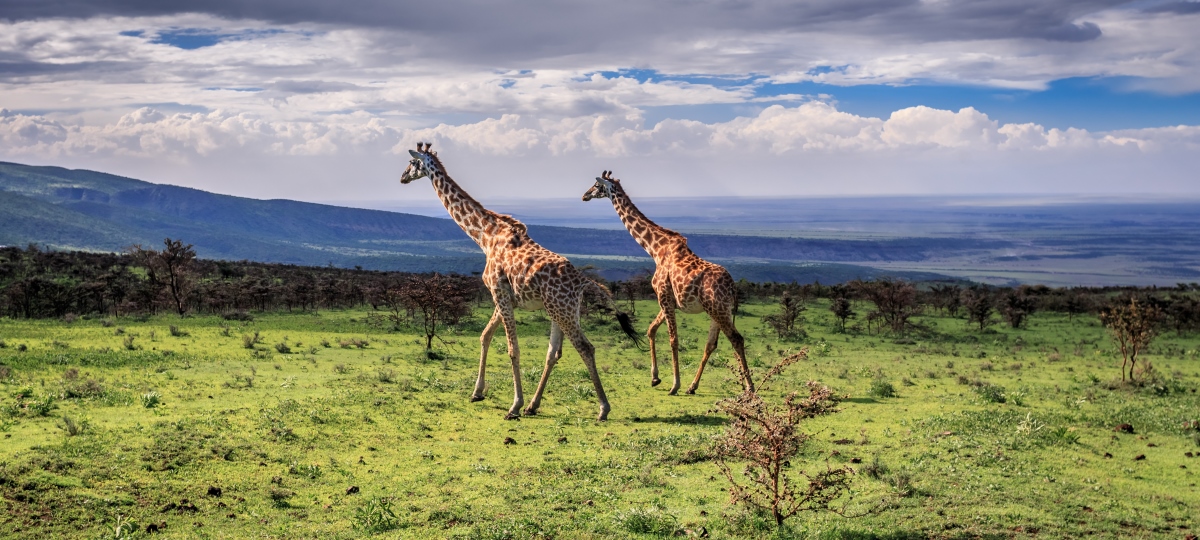A Tanzanian Adventure
Duration: 7 days
Highlights: Lake Manyara National Park, Ngorongoro Crater, Serengeti National Park
Request a quote
A&K DMCs’ specialised services are only available on a business-to-business basis, to travel industry advisors. We regret that we cannot provide quotations for consumers.
Send itinerary to client
Itinerary
Arrive at Kilimanjaro International Airport & overnight in Arusha.
Overnight: Bronze: Karama Lodge | Silver: Four Points Arusha
Meal Plan:
Day 2 - Tarangire National Park
Drive to Tarangire National Park, arriving at the lodge in time for lunch. In the afternoon set out to explore the park on a game drive.
Tarangire is one of the least visited parks in northern Tanzania yet its dense wildlife population, from July to November, is second only to the Serengeti. Explore the park's valleys and riverbeds in search of herds of impala, eland, kudu, and buffalo that wander the park's vast swamps and river. The park is also a bird lover's paradise with over 550 species and flocks of migratory birds from January to March. Return to your lodge just before sunset to freshen up before dinner.
Overnight: Bronze: Tarangire Kirurumu Camp | Silver: Tortilis Tarangire
Meal Plan: B,L,D
Day 3 - Tarangire National Park
Today enjoy a full-day game drive exploring this little-known park with a picnic lunch.
Centered on the Tarangire River, this park has expansive views with wide panoramas of wooded savannah stretching in every direction. The most outstanding feature is the Tarangire River, which is permanent and the only reliable dry-season source of water available to wildlife in this vast stretch of Tanzania's Rift Valley. The river attracts tremendous concentrations of animals and birds.
Make your way back to camp in the afternoon and choose to stretch your legs on a little bush walk should you wish. This is a fantastic way of learning about tracking animals, what plants are helpful, which are harmful, and seeing the myriad of small creatures which are so important to the ecosystem.
Overnight: Bronze: Tarangire Kirurumu Camp | Silver: Tortilis Tarangire
Meal Plan: B,L,D
Day 4: Ngorongoro Conservation Area
After breakfast drive to the Ngorongoro Crater. On the way, stop at the Abercrombie & Kent Philanthropy Project: Women's Bike Shop to see how it has positively impacted their lives.
Overnight: Bronze: Bougainvillea Ngorongoro | Silver: Acacia Farm Lodge
Meal Plan: B,L,D
Day 5: Ngorongoro Conservation Area
Explore the Ngorongoro Crater on a full day game drive with a picnic lunch and marvel at Earth's true ‘garden of Eden’.
This deep volcanic crater and the largest unbroken caldera in the world is about 20 kilometres wide, 600 meters deep, and covers a surface of 300 sq kilometres. It is safe to say that the Ngorongoro Crater is a breathtaking natural wonder. Within the crater rim, large herds of zebra and wildebeest graze nearby while sleeping lions laze in the sun. At dawn, the endangered black rhino returns to the thick cover of the crater forests after feeding on dew-laden grass in the morning mist. Just outside the crater's ridge, tall Maasai herd their cattle and goats over green pastures living alongside the wildlife as they have for centuries.
Overnight: Bronze: Bougainvillea Ngorongoro | Silver: Acacia Farm Lodge
Meal Plan: B,L,D
Day 6: Serengeti National Park
Set out after an early breakfast for Serengeti National Park. You will pass plenty of wildlife on the way - take a picnic lunch with you to maximize your time in the park before arriving at the lodge in the late afternoon. The Serengeti is an astounding sight - endless miles of rolling savannahs dotted with an unbelievable amount of wildlife. This is what makes the Serengeti so unique.
Overnight: Bronze: Kirurumu Serengeti | Silver: Mara Under Canvas
Meal Plan: B,L,D
Day 7 & 8: Serengeti National Park
You have two full days to explore the Serengeti National Park on morning and afternoon game drives - look out for the elusive leopard which likes to hide in the tall yellow fever trees on the plains.
Every year, triggered by the rains, 1.3 million wildebeest, 200,000 zebra, and 300,000 Thomson's gazelle gather to undertake the long trek to new grazing lands. The migration of the herbivores roughly defines the boundaries of Serengeti National Park, which is the central zone of the Serengeti ecosystem, an area that also takes in Kenya's Maasai Mara National Reserve, the Ngorongoro Conservation Area to the east, the Grumeti to the west and the Maswa Game Reserve in the south.
The Serengeti is not only famous for the great Wildebeest Migration but also for the vast number of species that reside in the park year-round. The concentration of predators in the Serengeti is high with large prides of lion, numerous hyena clans, and regular sightings of both cheetah and leopard. Elephant, buffalo, giraffe, and antelope can be found feeding on the rich plains as well as some of the lesser known and hard-to-spot species such as aardwolf, mongoose, caracal, servals, and hyrax.
Overnight: Bronze: Kirurumu Serengeti | Silver: Mara Under Canvas
Meal Plan: B,L,D
Day 9: Depart
Today you will fly back to Arusha where you have a day room near the international airport to freshen up before your evening flight home.
Day room: Airport Planet Lodge
Meal Plan: B
To extend this safari see our Zanzibar Extension Option



